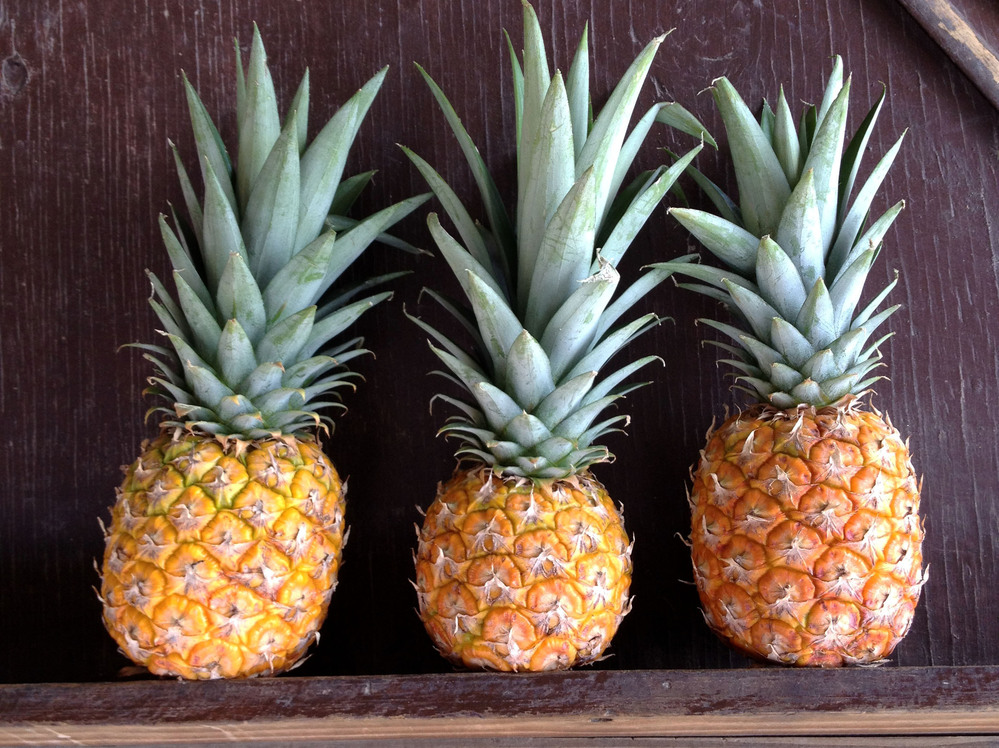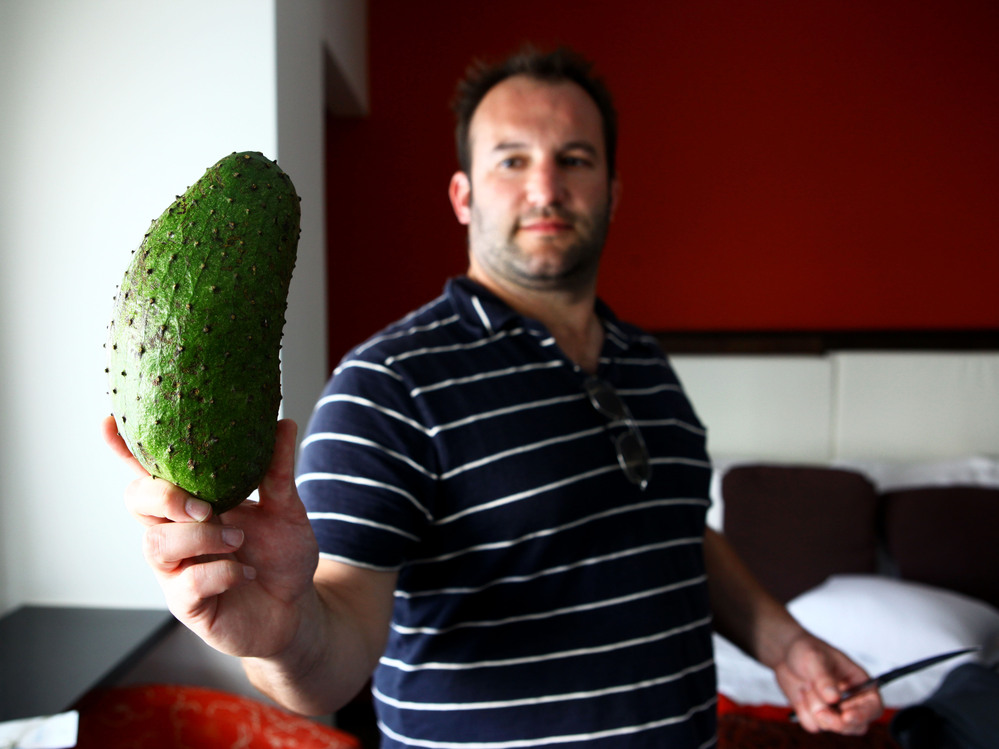 Enlarge image i
Enlarge image i You'd think tropical fruit would be everywhere on a Caribbean island. But we had to search fairly hard to find these beauties.

You'd think tropical fruit would be everywhere on a Caribbean island. But we had to search fairly hard to find these beauties.
To be clear, the trip I took a couple of weeks ago to Puerto Rico with an NPR team was not about food. We headed down to the island to report on the economic and crime troubles that are driving people off the island and to Florida in record numbers. And though we did tons of advance research about census figures and crime statistics, none of us really looked up good places to eat.
In a tropical, Latin land, we assumed we'd be practically stumbling over savory local meals and exotic fruits.
The reality? Not so much.
When we asked for fruit juice, our options would be orange or maybe apple. And though we kept watch for roadside food stands as we drove miles across the island, we saw very few.
We also searched high and low for delicious guanabana. Alas, it took us days to find it, and when we did, it was frozen, and $5 a pound.
But here's the fascinating part. Wilo Benet, a Puerto Rican celebrity chef (we're talking Top Chef Masters), says our culinary hunt actually illustrates the strange economics of food on the island: For the most part, what's grown there is exported, and the vast majority of what's eaten by islanders 80 percent or more, according to some sources is actually imported, largely from the mainland U.S.
Puerto Rican mangoes and passion fruit, Benet says, mostly end up in London grocery stores. And though "we have tremendous fish here," he says, "New York will pay top dollar for it. " A fisherman "would never make [that kind of] money here."
Meanwhile, that guanabana? It was probably so hard to find and so expensive because it was shipped in from elsewhere, Benet tells me.
That's because in the middle of the 20th century, Puerto Rico's leaders pushed to "modernize" the island, which quickly transformed from an agricultural economy to an industrial one.
 Enlarge image i
Enlarge image i NPR host David Greene shows off a guanabana purchased after a long search for one in Puerto Rico.

NPR host David Greene shows off a guanabana purchased after a long search for one in Puerto Rico.
"Puerto Rican agriculture virtually collapsed," writes Gustavo Setrini, who studies the island's economy at the MIT Center For International Studies.
The consequences are evident in a striking anecdote Benet shared with me. Back in 1996, when he was cooking for the Puerto Rican committee in Atlanta during the Summer Olympics, he says, "it was easier for me in Atlanta, Ga., to buy a case of Puerto Rican breadfruit than it is for me to do that at my restaurant in San Juan."
And here's another funny thing: Back in San Juan, when we'd ask for restaurant recommendations, locals sent us to sushi and taco joints. "True traditional, down home-style places are not that many," Benet says, speaking from Pikayo, his contemporary, fine dining restaurant in San Juan.
There are some hole-in-the-wall-kiosks that are hard to find, he says, and a burgeoning fine dining scene. But restaurants with simple, traditional Puerto Rican fare?
Those kinds of places are hard to keep open, since modern palates demand fusion menus and American classics, he says. So unless you know a good local home cook, good luck.
Still, it's worth doing your culinary research before heading to the island, because fantastic local meals can be found, says Maricel Presilla, an expert on pan-Latin cuisine.
"Mofongo," she says a local staple of mashed green plantains, often filled with meat or seafood "can be a thing of wonder."
If only I had called her before I left.
No comments:
Post a Comment